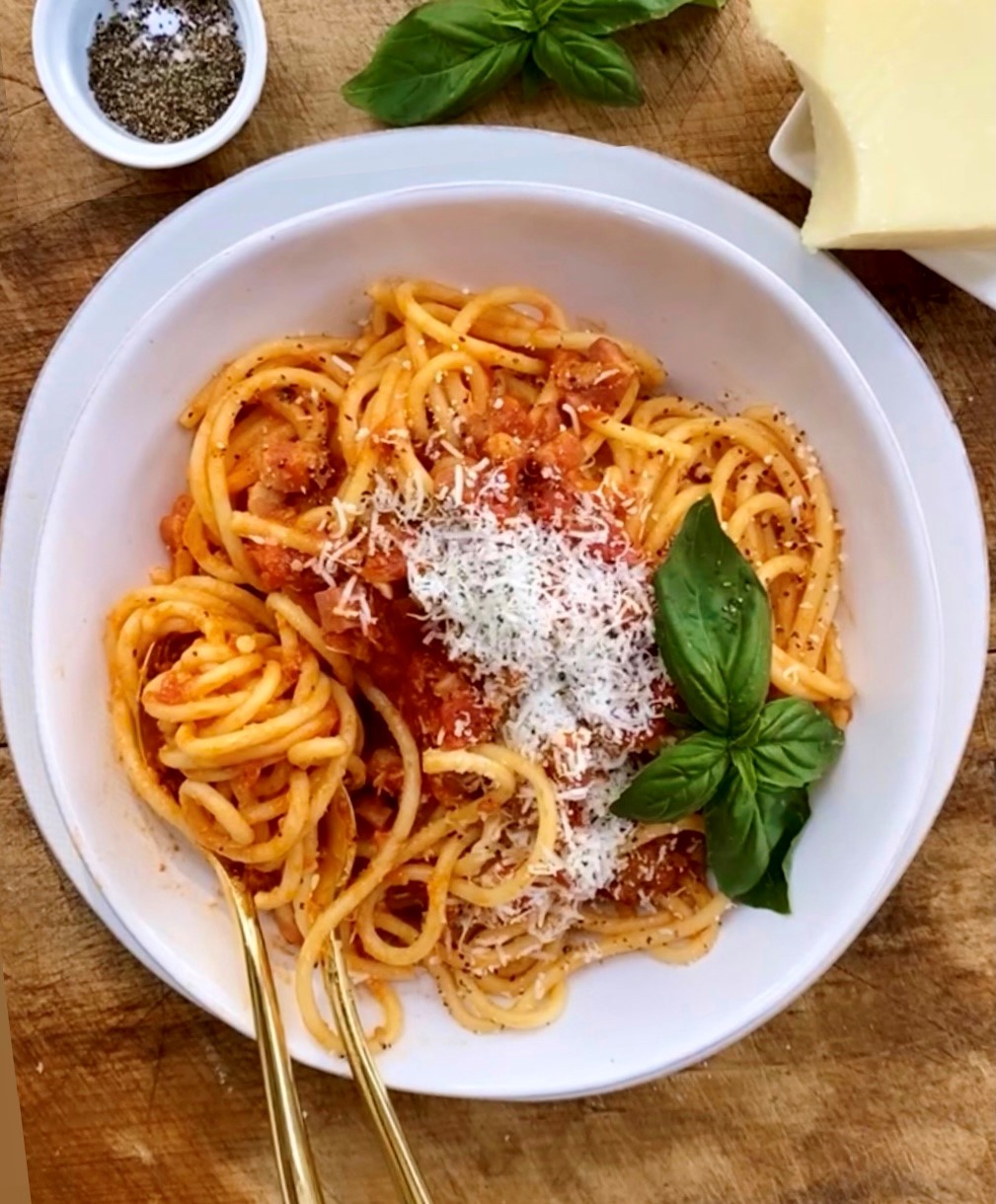
Bucatini all'Amatriciana
INGREDIENTS
- 1 tablespoon extra-virgin olive oil
- 6 ounces guanciale, cut into slices about 1/8 inch thick and then into 3/4- by 1/4-inch strips (see note)
- Pinch red pepper flakes
- 1/4 cup dry white wine
- 1 (28-ounce) can whole peeled tomatoes, crushed by hand or with a fork
- Kosher salt and freshly ground black pepper
- 1 pound dried bucatini pasta*
- 1-ounce grated Pecorino Romano cheese, plus more for serving
INSTRUCTIONS
- Heat oil in a large heavy skillet over medium heat. Add the guanciale and sauté until crisp and golden, about 4 minutes.
- Add pepper flakes and black pepper, and stir until blended (10 seconds). Pour wine into the pan and cook for 3 minutes.
- Add tomatoes, reduce heat to low, and cook, stirring occasionally, until sauce thickens, 15-20 minutes.
- Meanwhile, bring a large pot of water to a boil. Season with a little salt (don't overdo it); add the pasta and cook, stirring occasionally, until al dente. Drain, reserving1/4 cup pasta cooking water.
- Add drained pasta to sauce in skillet and toss vigorously with tongs to coat. Add pasta water, 1 tablespoon at a time, until you reached desired consistency.
- Stir in Pecorino Romano and transfer pasta to warmed bowls. Top with additional cheese.
Note: Due to its long, round shape, bucatini is sometimes mistaken for spaghetti. The key differences between the two are the size and the hole in the center. Bucatini is thicker than spaghetti, making room for that hollow center running throughout. While the two kinds of pasta are used in similar dishes, bucatini's center hole gives it a more interesting texture and makes it better at sopping up sauces.
